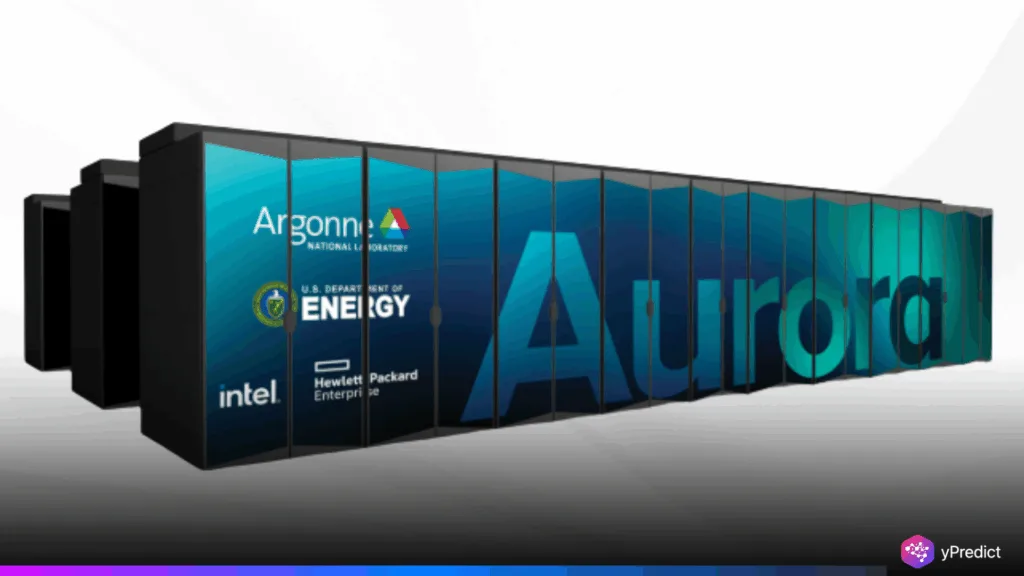
On July 16, 2025, the Aurora exascale supercomputer was the subject of a dedication ceremony by U.S. Energy Secretary Chris Wright at Argonne National Laboratory in Lemont, Illinois. The computational capabilities of Aurora facilitate studies of quantum, artificial intelligence, and energy. Working on a budget of 2.1 billion dollars annually, Argonne cuts across the fields of nuclear energy, cutting-edge computing, and climate modeling. The visit is reminiscent of the 2025 energy dominance plan of President Trump, and this is an indication that there is a shift of focus on an infrastructure based on AI and quantum. This is when a paradigm shift might occur in the U.S. energy research and technology direction.
Aurora Supercomputer Dedication Highlights Research Expansion
The functionality of the Aurora supercomputer in place of Argonne National Laboratory is one of the symbols of a massive leap in the computing dominance of the USA. By May 2024, Aurora will be able to provide 1.012 exaFLOPS to enable complex modeling in the climate science, energy storage, and national security domains. The system can quickly provide models of extreme weather conditions. The dynamics of nuclear materials and contingent operations of the grid. They are some of the central domains of energy resilience in the 21st century. This presentation was attended by the Secretary, Chris Wright. Who stressed the Aurora contribution in changing the energy research using AI and quantum computing?
With the availability of Aurora, other Argonne facilities such as the Advanced Photon Source and Quantum Foundry will strengthen the reputation of the facility as a technology powerhouse. Earlier supercomputers contributed to theoretical physics and genomics research. Aurora is an applied machine whose main mission is real-time problem solving, thus critical to future-proofing infrastructure. The visit also showcased new AI frameworks used in predictive grid analytics and materials discovery. Hinting at deeper federal prioritization of computational research. As AI models require massive datasets and iterative optimization, Aurora offers the performance to meet those demands. Potentially shifting funding and focus across national labs toward exascale-enabled discoveries.
Funding and Policy Questions Emerge Around Grid Resilience
According to a 2023 Department of Energy report, only 15% of the volume of output of the lab was bound up with enhancing the reliability and security of the national power grid. That is a massive shortfall, as the U.S. is experiencing an increasing number of cyberattacks, wildfire threats, and transmission line failures. Argonne coordinates projects such as the Grid Modernization Laboratory Consortium and the Energy Storage Grand Challenge, which usually fall more into the exploratory category than the implementation category. According to budget documents, spending far outweighs the most critical area of investment in grid-hardening measures that are urgently needed.
The visit from Secretary Wright underscores this tension. His remarks echoed the administration’s “energy dominance” platform. Envisions innovation-driven and computational leadership rather than regulatory growth or direct climate mitigation. That is a stark difference from the Biden-era Bipartisan Infrastructure Law that appropriated $62 billion to clean energy and grid upgrades. With the changing mission of Argonne, the dichotomy of foundational research and immediate resiliency is an issue of concern. Whether Aurora helps address that balance or signals a further shift toward digital-first energy policy will shape how future federal resources distributed across labs.
Argonne’s Role in Shaping Energy Research Futures
The tour by Secretary Wright to Argonne highlights one major turnaround in the U.S. energy research strategy. As the Aurora supercomputer is becoming a reality. The picture seems to be more inclined to high-performance computing. AI and quantum systems are in the spotlight of innovation in the energy sector. As the federal agenda shifts toward energy dominance and technological supremacy, Argonne’s priorities may increasingly reflect that pivot. The coming years will test whether advanced computing can meaningfully address urgent infrastructure needs or if it widens the gap between research and resilience.







